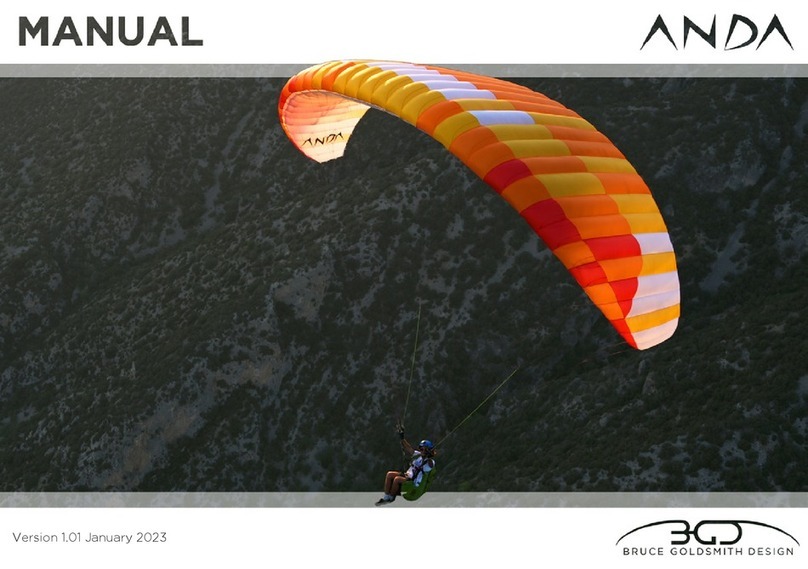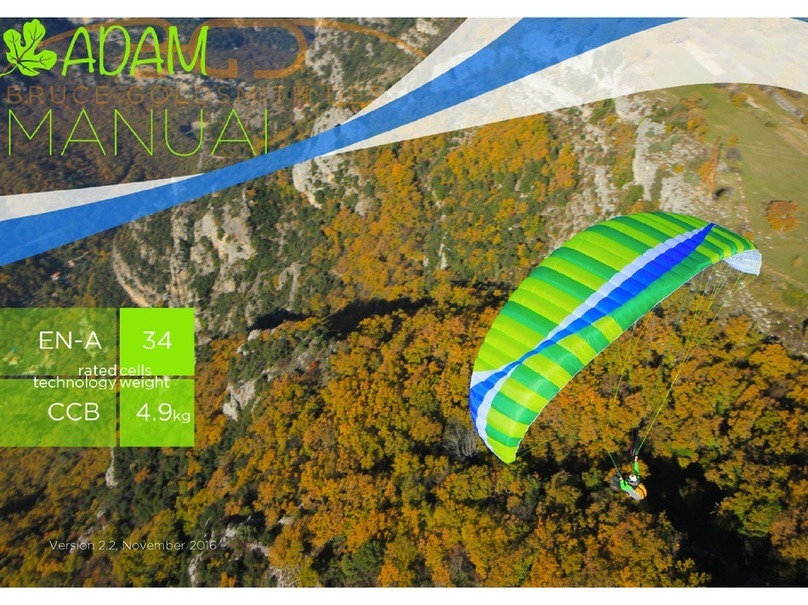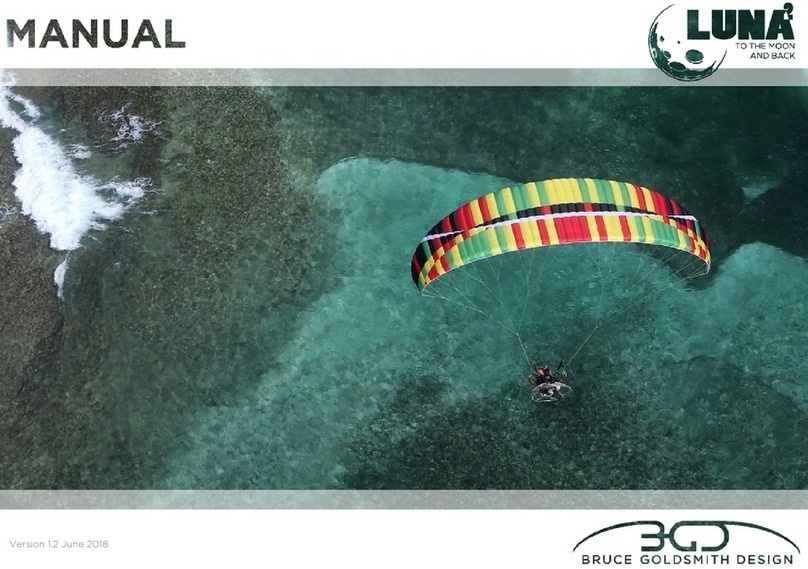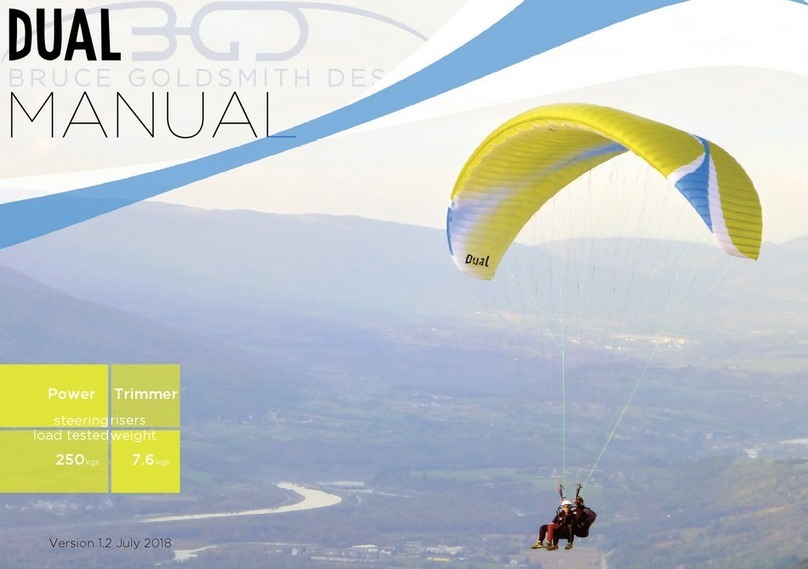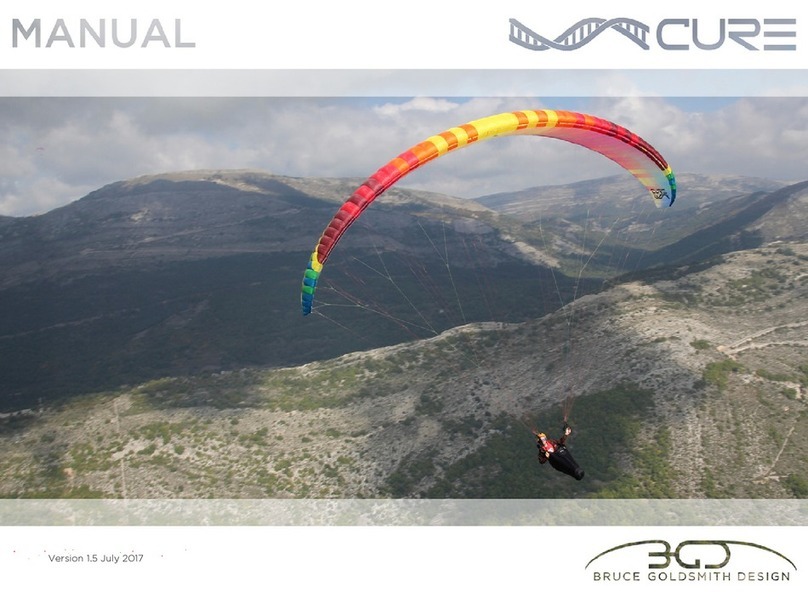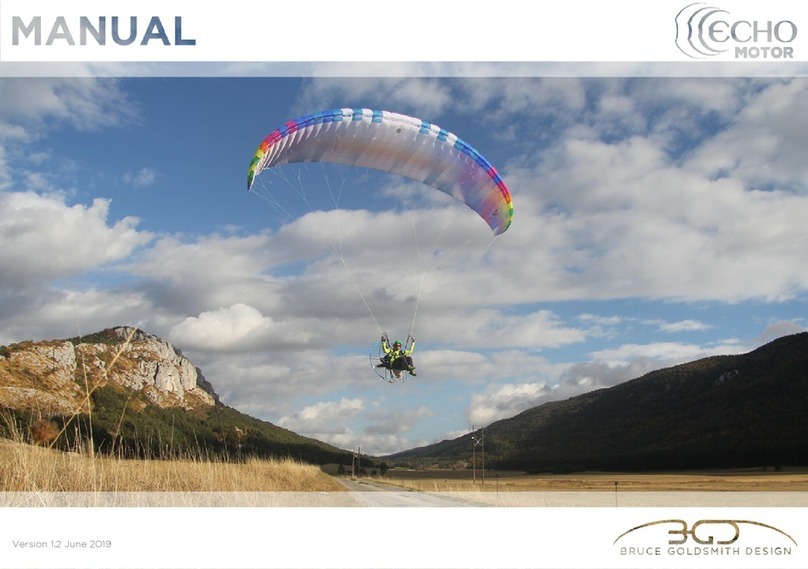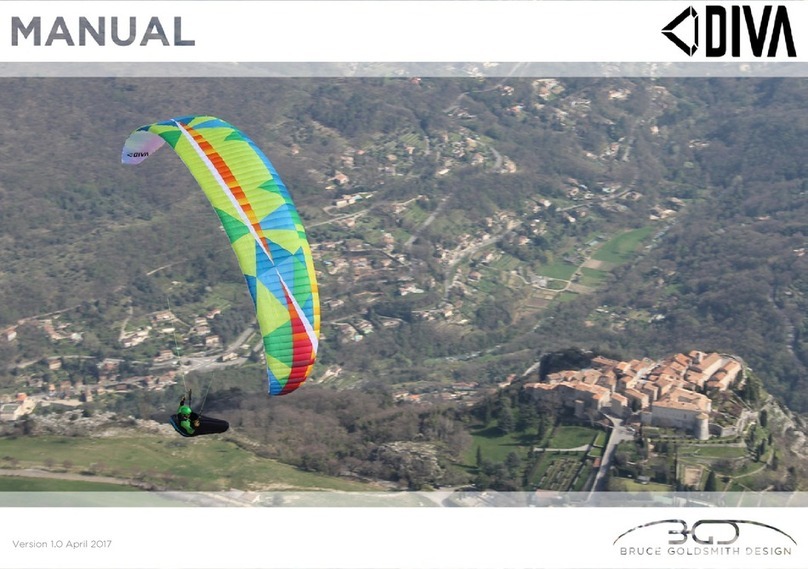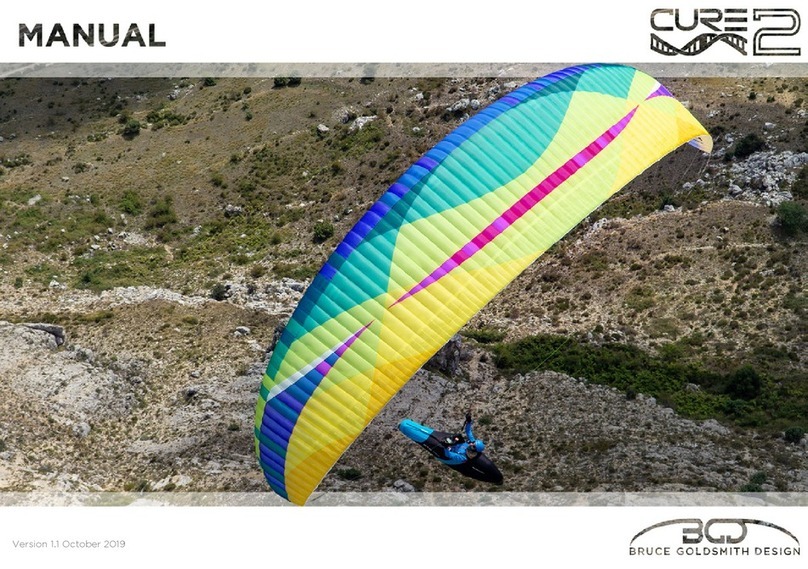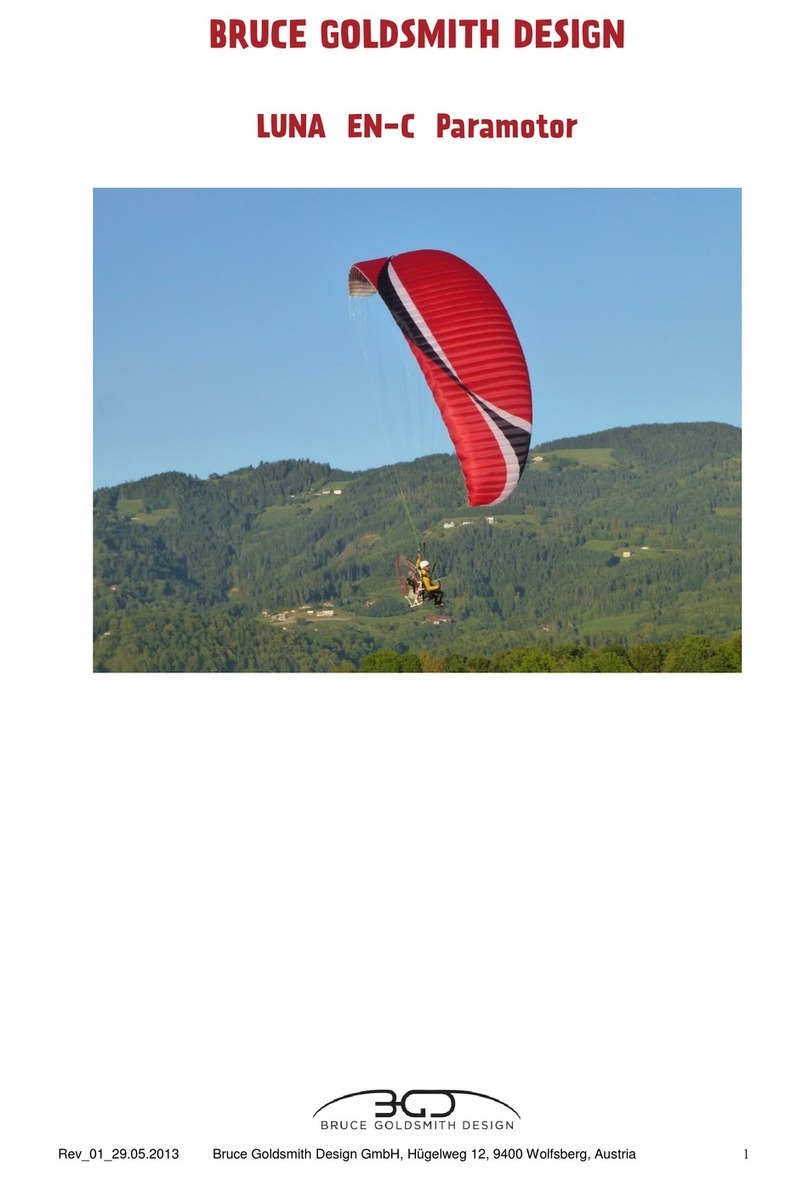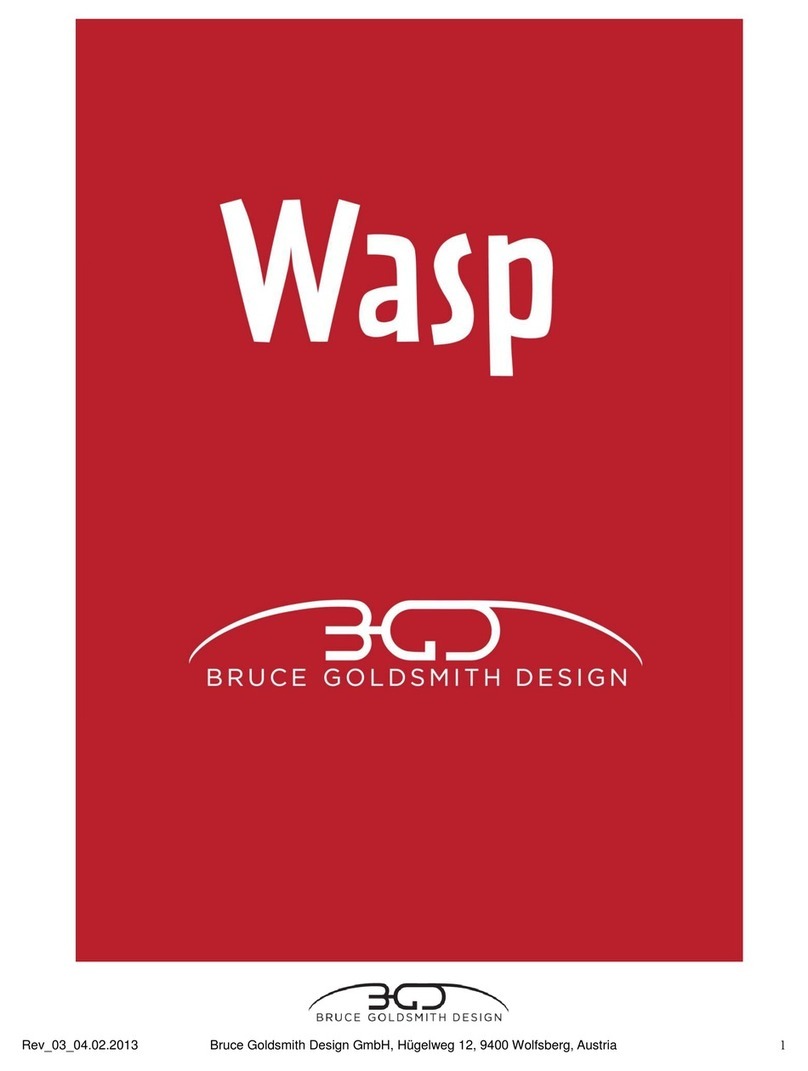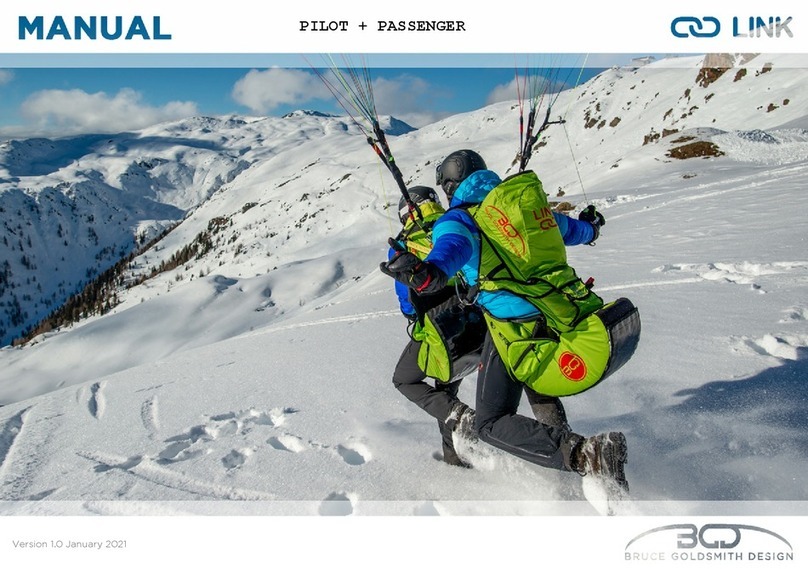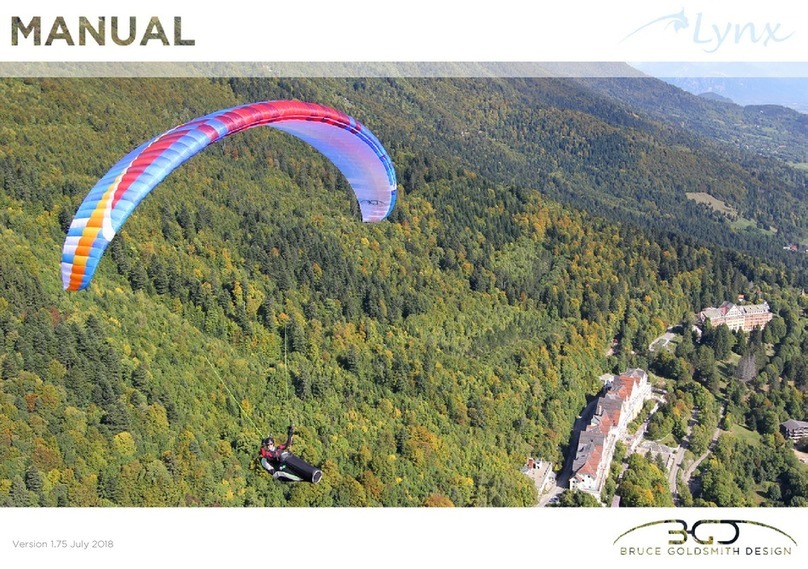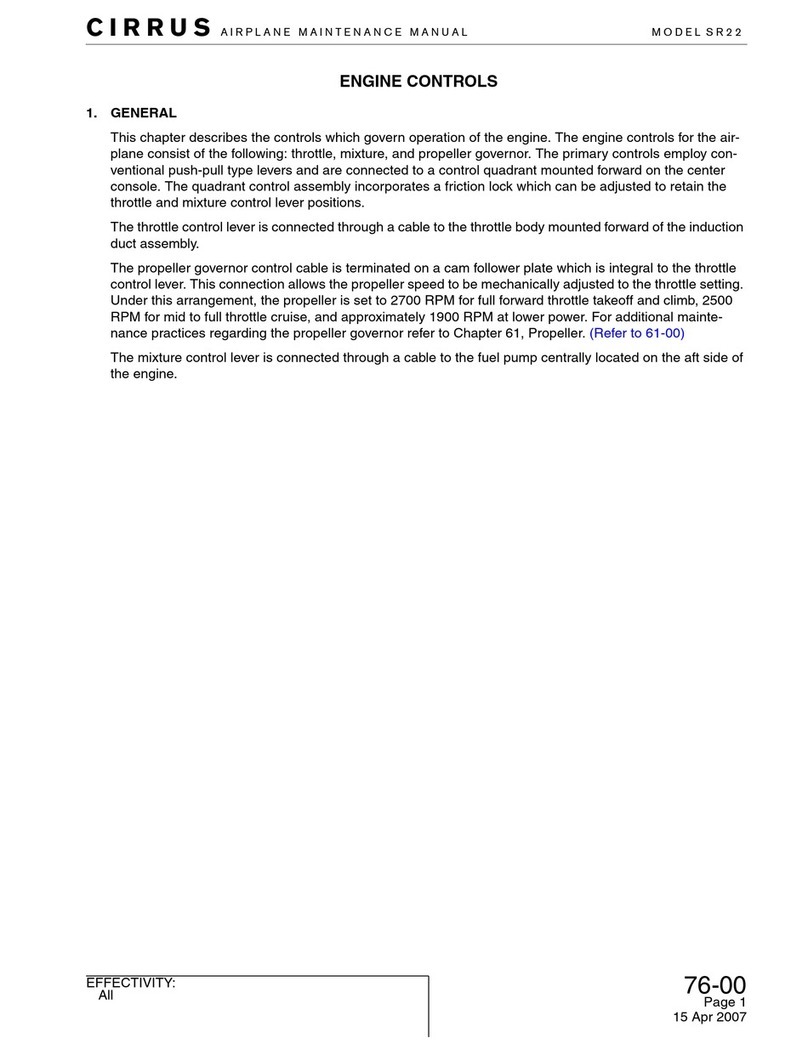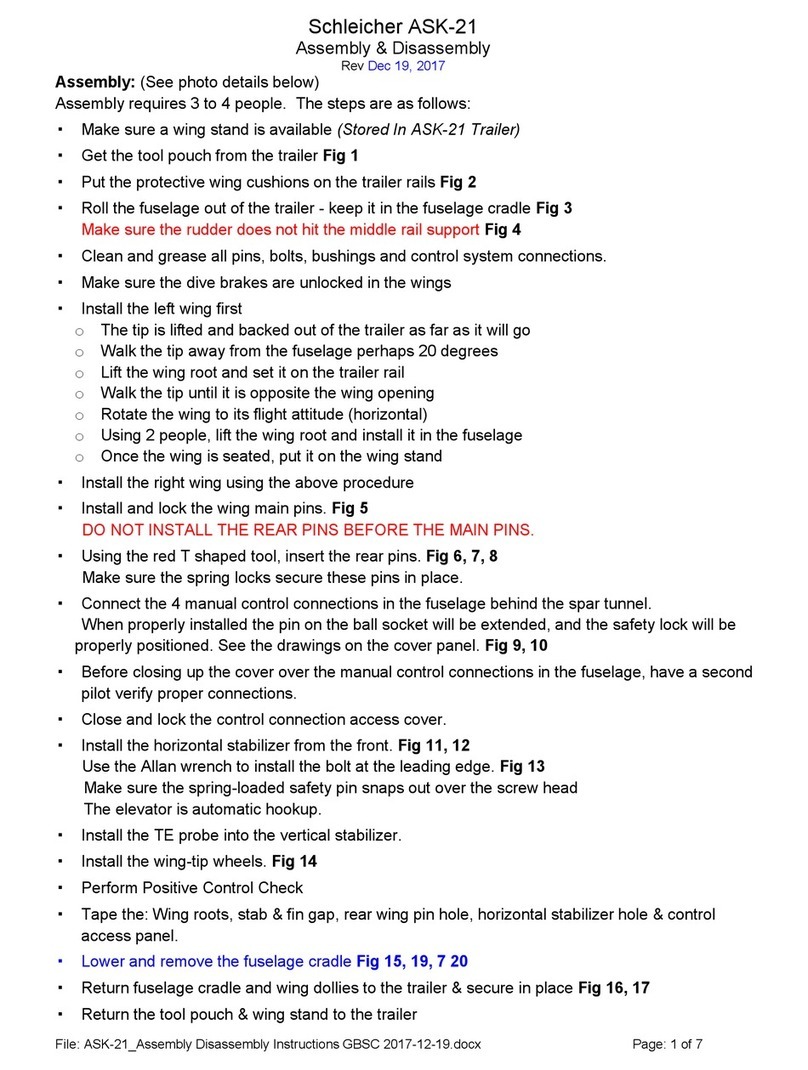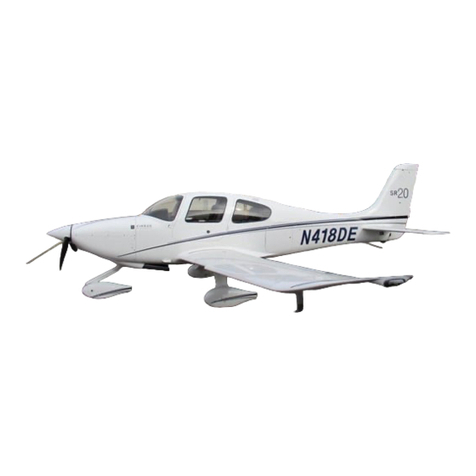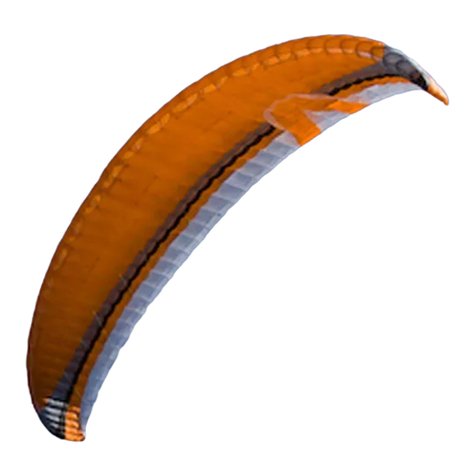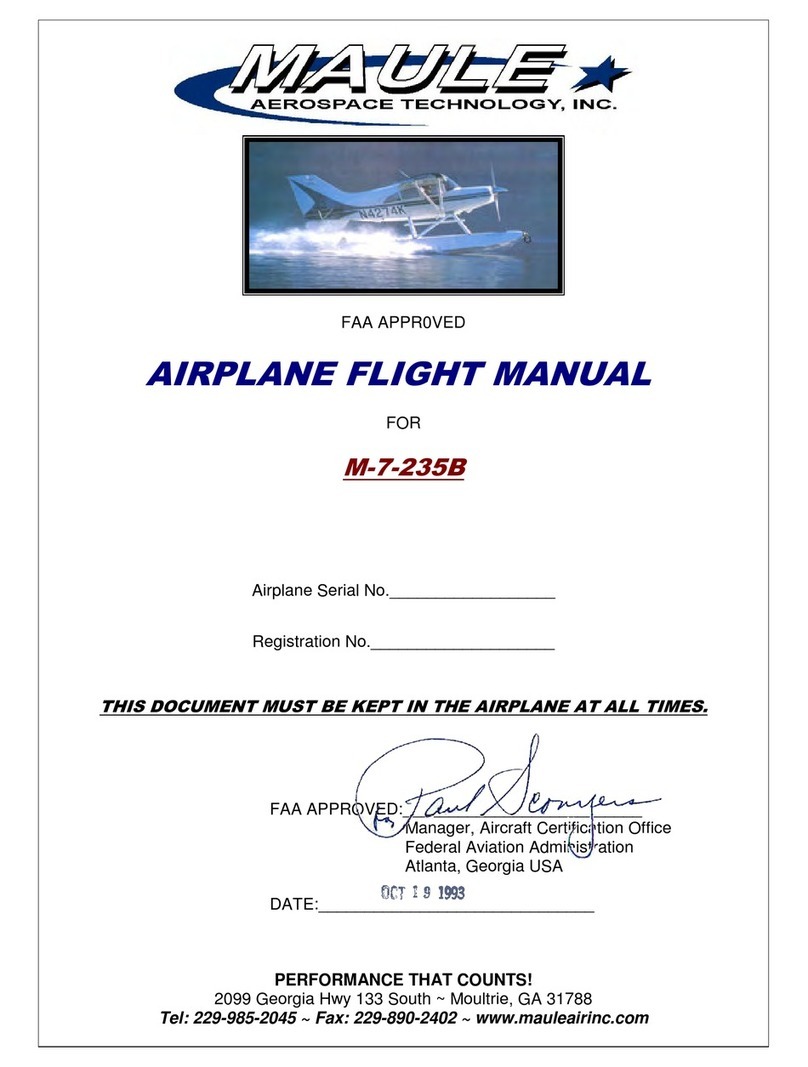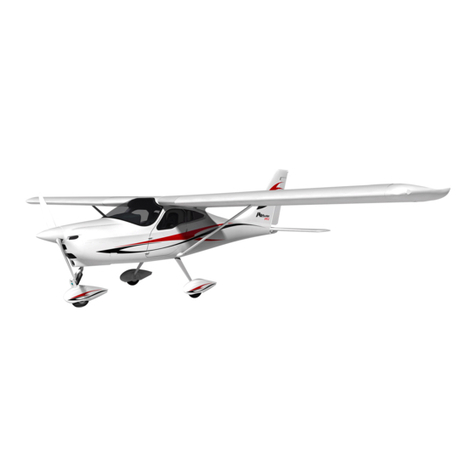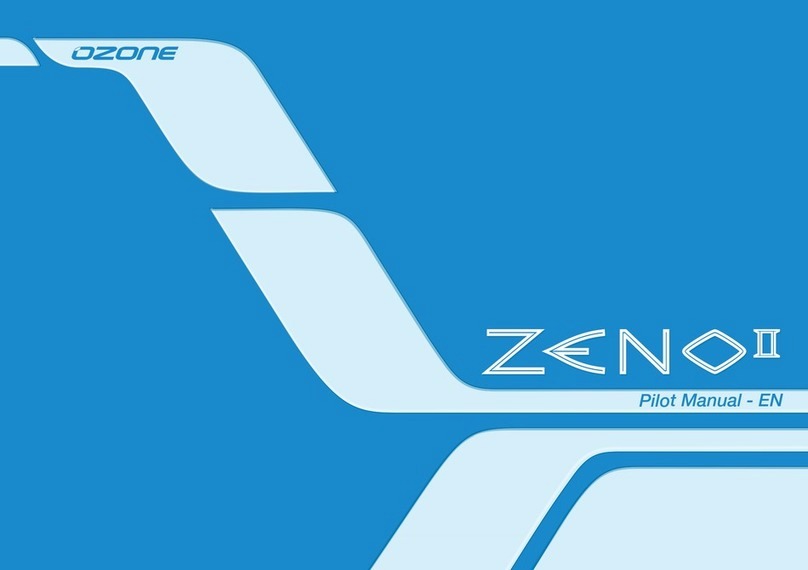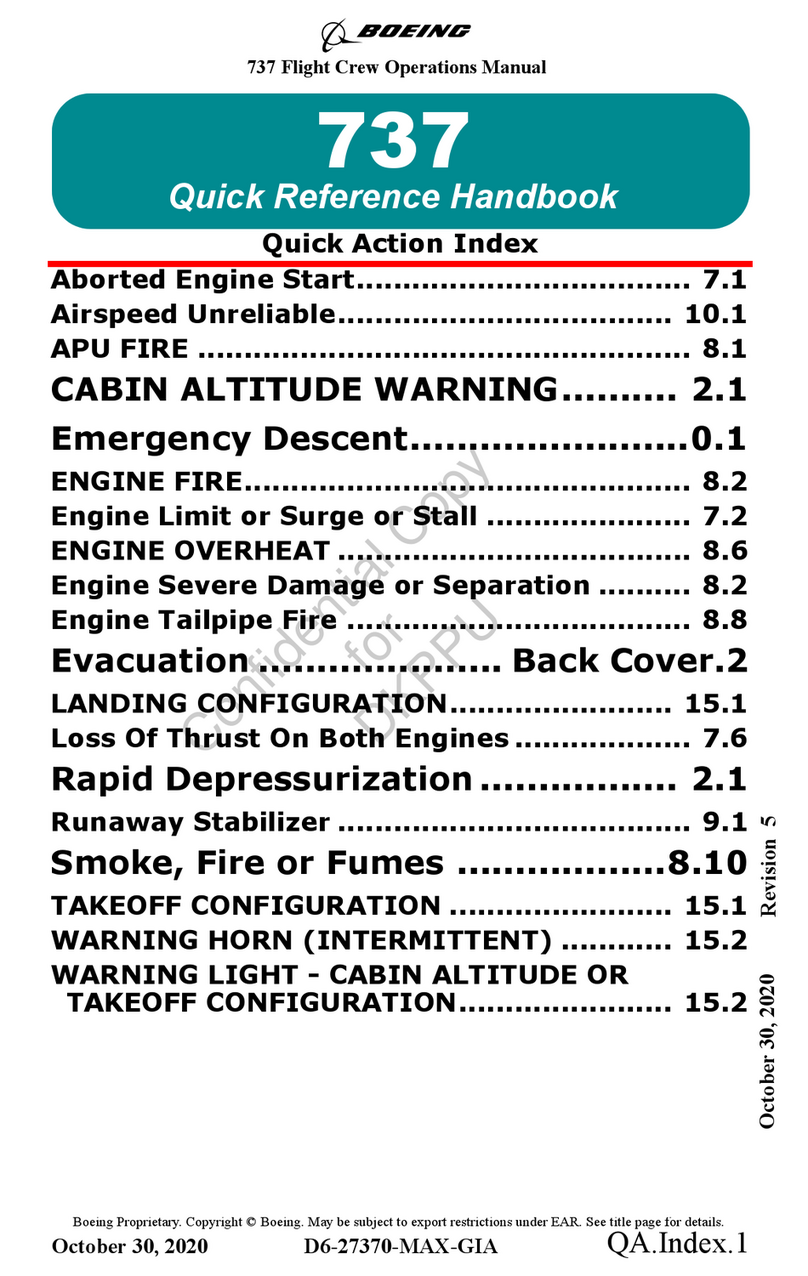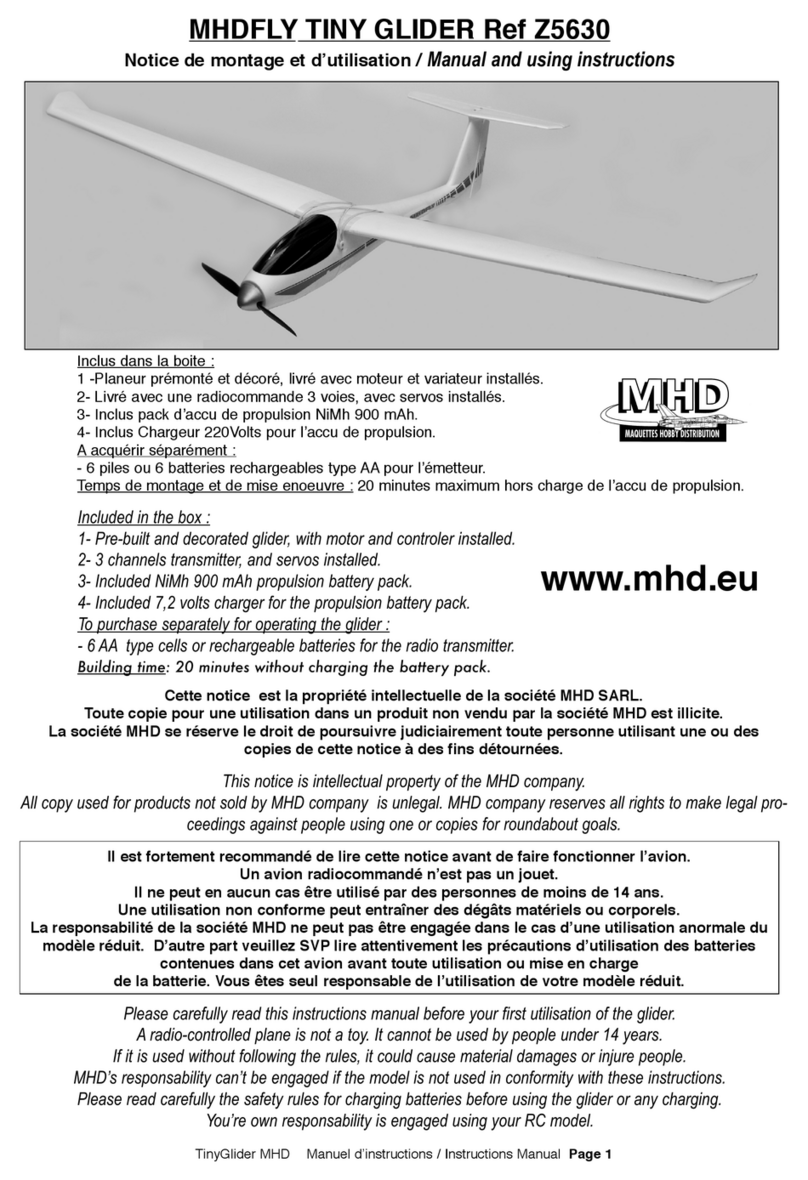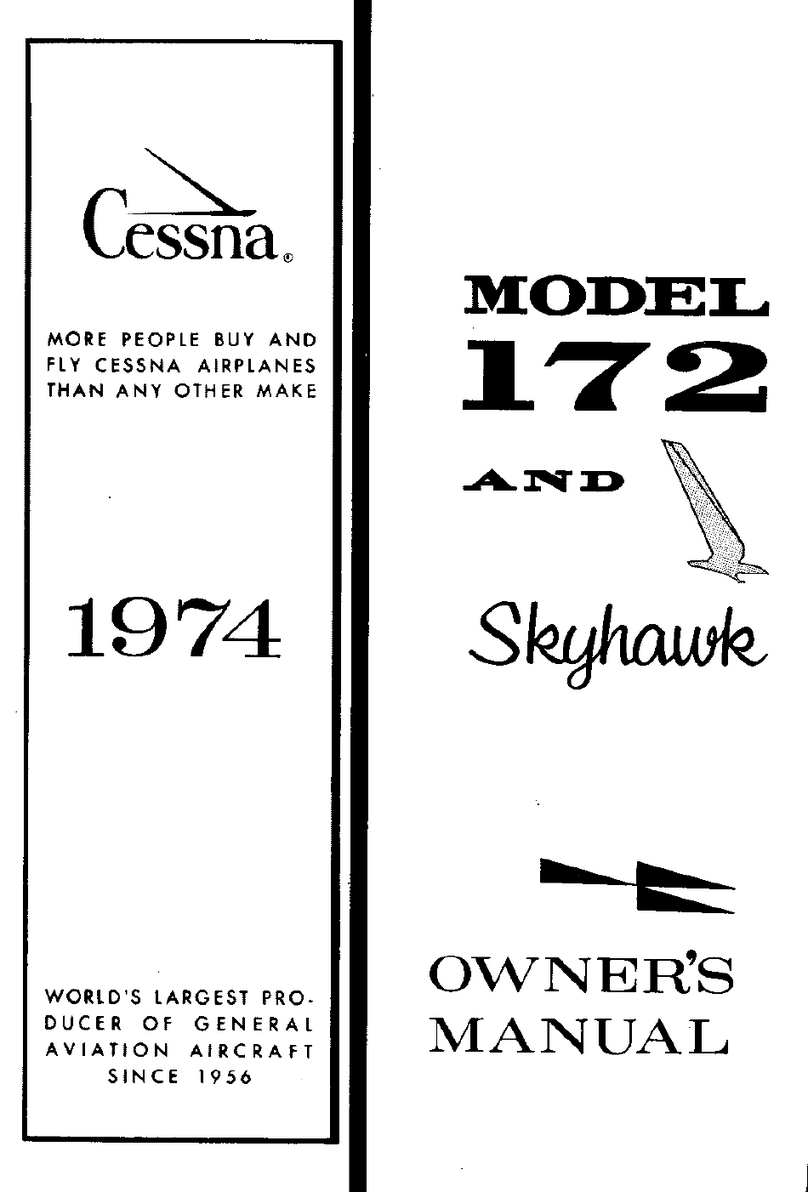
7
DUAL 2 manual EN version 7 February 2020
Pre-ight inspection
Your paraglider is designed to be as simple as possible to inspect and maintain but a thorough pre-ight procedure is
mandatory on all aircraft. The following pre-ight inspection procedure should be carried out before each ight.
1. CANOPY: Whilst opening out the paraglider check the outside of the canopy for any tears where your
paraglider may have been caught on a sharp object or even have been damaged whilst in its bag.
2. LINES: Check that the lines are not twisted or knotted. Divide the suspension lines into groups, each group
coming from one riser. By starting from the harness and running towards the canopy remove any tangles or
twists in the lines. Partially inating the canopy in the wind will help to sort out the lines.
3. BRAKES: It is particularly important that the brakes are clear and free to move. Check the knot which attaches
the brake handles to the brake lines. Avoid having too many knots, as there is a risk the knots could become
stuck in the brake pulleys. Both brakes should be the same length and this can be checked by asking an
assistant to hold the upper end of the brake lines together whilst the pilot holds the brake handles. The brake
lines should be just slack with the wing inated when the brakes are not applied. After checking the brake
lines lay them on the ground.
4. BUCKLES, MAILLONS, KARABINERS CLOSED: Always check the buckles and attachments on the harnesses.
Ensure the main attachment maillons/ karabiners from the harnesses to the spreaders, the spreaders to the
main risers, and the individual shackles which attach the risers to the lines, are tightly done up.
5. HELMETS: Pilot and passenger should be wearing certied helmets before strapping in to their harnesses.
Ensure all the buckles are secure and properly adjusted for comfort.
6. TRIMMERS: Ensure the trimmers are set equally on each side. The recommended trimmer position for take-off
is with the trimmers released 30mm.
4. Preparation
